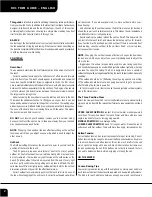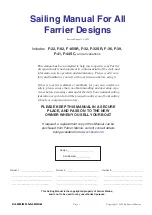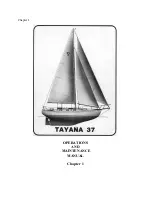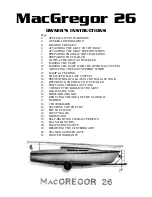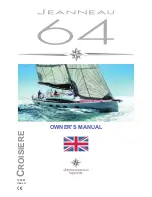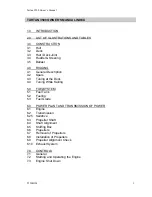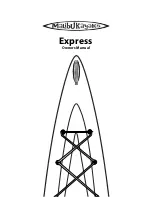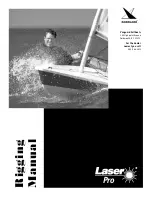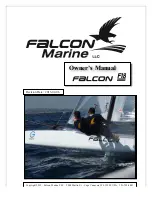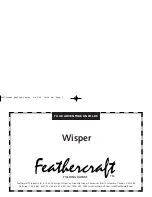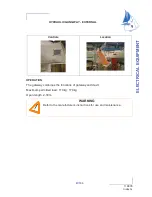
for optimum pointing ability without sacrificing reaching speed and downwind
control. Reaching this balance is a process of trial and error to determine
which tuning is best for your board and fin combination.
Slalom Tips
Slalom racing requires tuning with the emphasis on top-end speed and
power, period. The smaller RX1s (5.8–7.1) are aimed at solid slalom
performance in winds from 15 to 35 knots. Tuned ideally they should still
have a fairly round entry and very even twist. If you have to use them for
course racing try a bit less downhaul and use an adjustable outhaul to get
the optimum upwind performance.
TUNING
The tuning instructions in this Trim Guide are intended to help you achieve
the correct settings by observing a rigged sail on the beach. The best way
to start is by getting the sail trimmed close to the luff and boom dimensions
printed at the tack.
Once this has been done, step back and look at the result. Hold the sail
up in the breeze, then fine tune to the conditions and your personal preference
working from the drawings for each sail category (slalom or course racing
sizes). With the sail lying in front of you, the head area on the ground, you
will see a loose area between batten #1 and #4. By raising and lowering
the head off the ground using the boom as the lever point, the shape of the
looseness will be more apparent.
Generally, when the sail is being used fully powered, you will be at maximum
downhaul tension (slightly more looseness), and controlling the power in
the sail with the outhaul. Any luffsetting less than that will increase power
but reduce the top end speed. Adjustments of a few millimeters will make
differences that you can feel on the water. Some sizes will appear slightly
flatter or fuller than others, and the leech tension, as seen on the beach, will
not look exactly the same from size to size.
GENERAL POINTS
Sail ‘Break In’
It should be noted that the RX1, will ‘settle in’ during the first few uses. Luff
lengths required to obtain optimum performance settings may become slightly
longer over time, and this is perfectly normal.
In fact performance generally improves as the sail is used, and experienced
racers pay special attention to changing trim settings during the first uses
of new sails; often beginning with minimum downhaul settings and working
toward more downhaul as the sail breaks in.
Harness Lines
Most top racers are using adjustable harness lines to maintain optimum trim.
Neil Pryde Vario Harness Lines can be easily adjusted to longer settings for
slalom or shorter lengths for course racing.
Alternative Masts
All of the tuning instructions above apply to the sail as used with the
recommended first choice mast (RacePro). Tunings for second choice or
compatible masts are best found by experimentation, working from the
information above.
Take Care Of Your Sail
It is an expensive piece of high tech equipment and deserves to be kept
clean with a regular fresh water shower. Put it away dry! Don’t leave your
sail sitting in direct sunlight for extended periods. Over exposure to ultraviolet
radiation can irreparably damage the sail fabrics and films. Furthermore, we
strongly advise you to keep the Shear Tip fittings free of sand and dirt by
rinsing them often. This will ensure a better rotation of the Shear Tip arm.
Curved batten
Batten end falls below smooth leech line
Minimum Outhaul
Maximum Outhaul
Batten end in line with smooth leech
Straight batten
3
RX1 T R I M G U I D E – E N G LI S H

